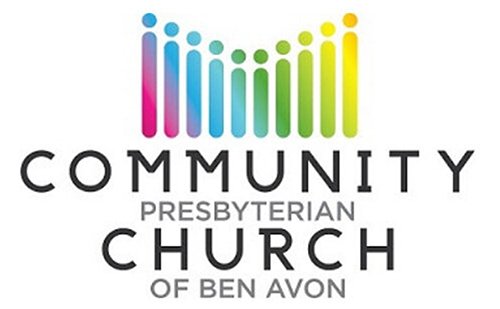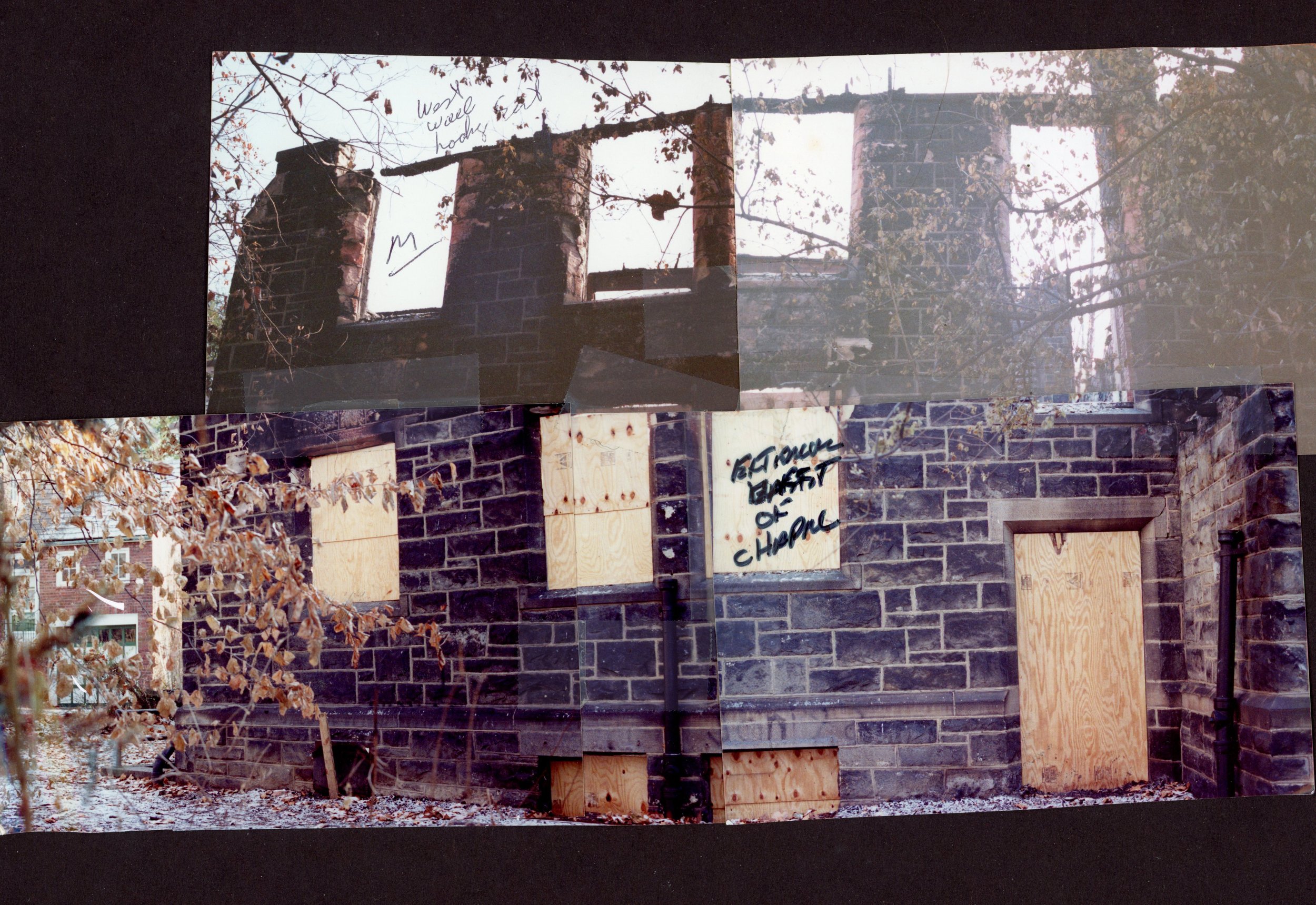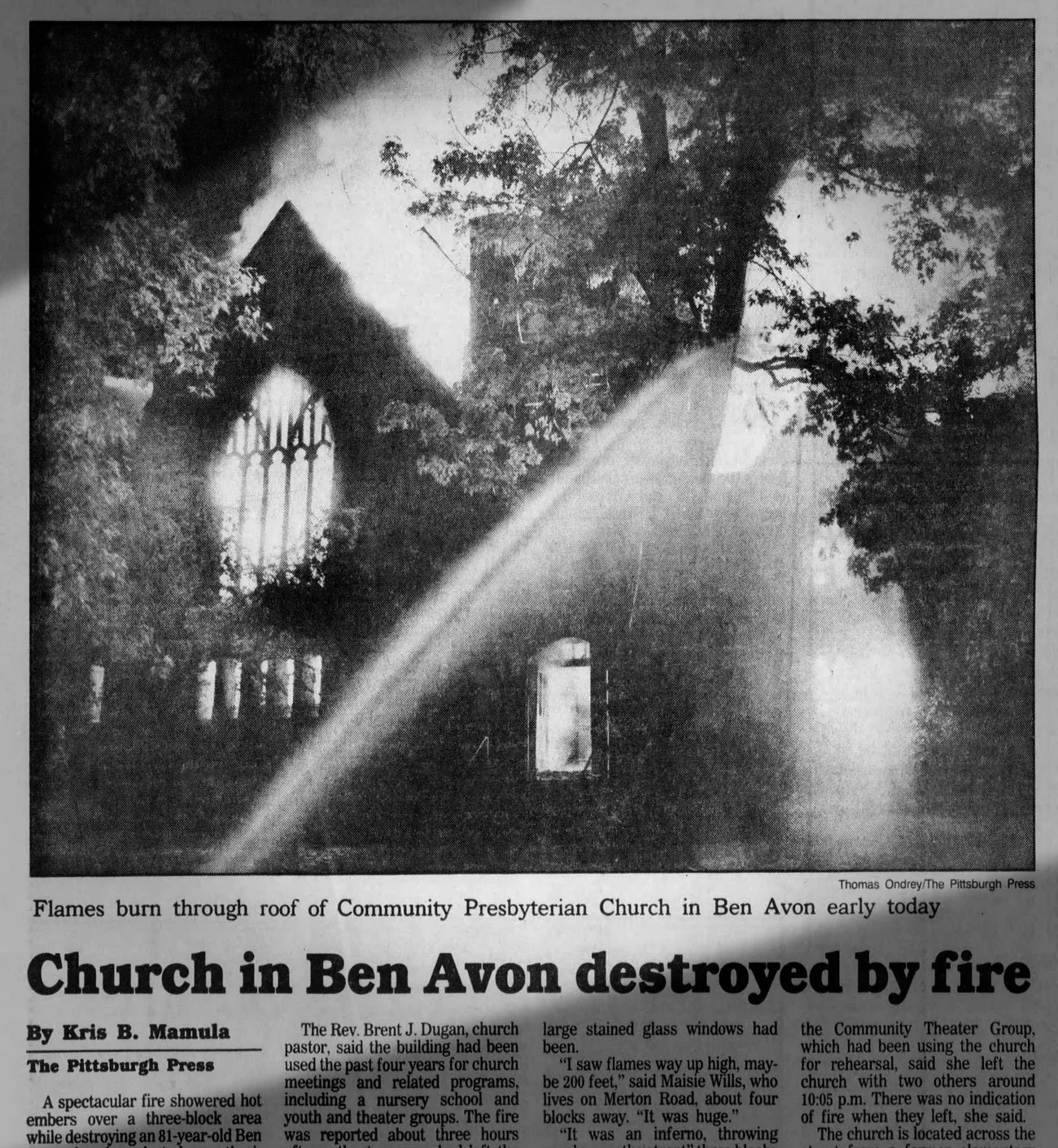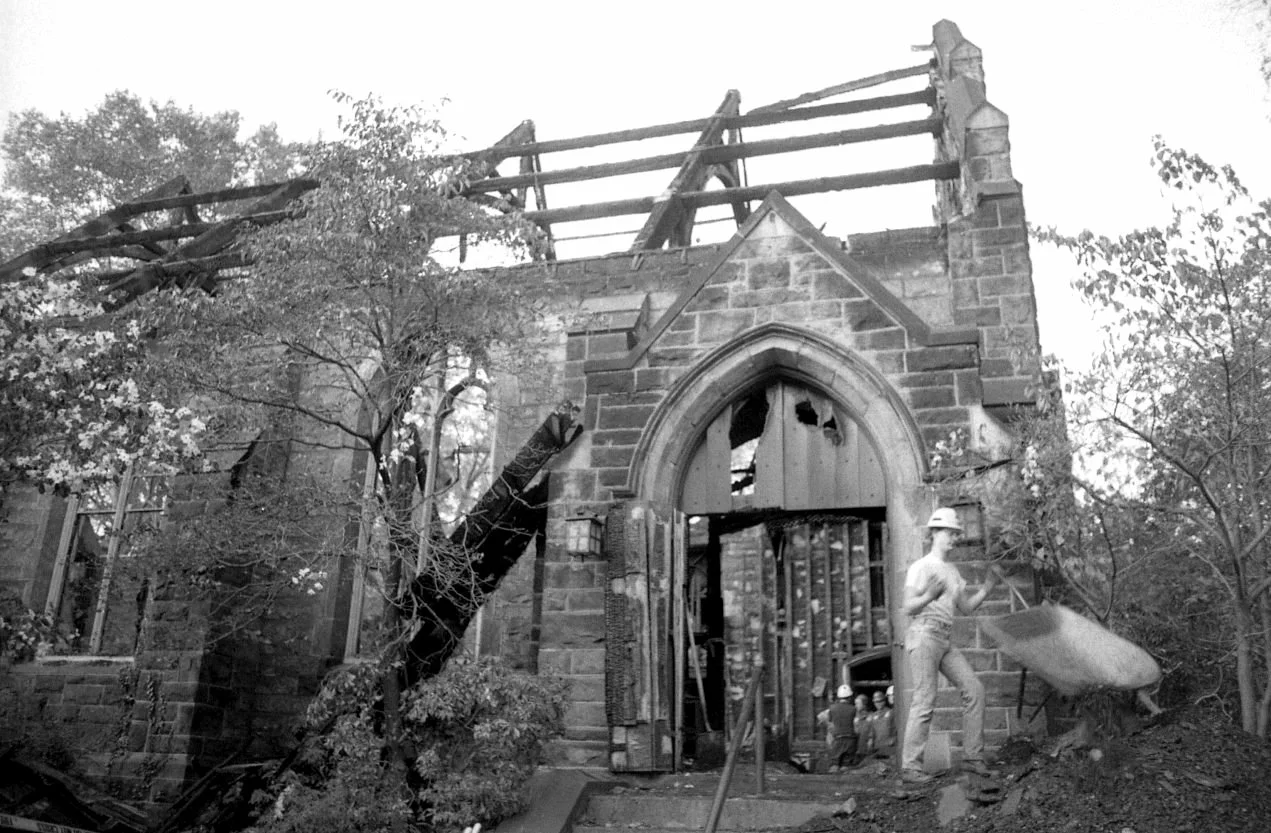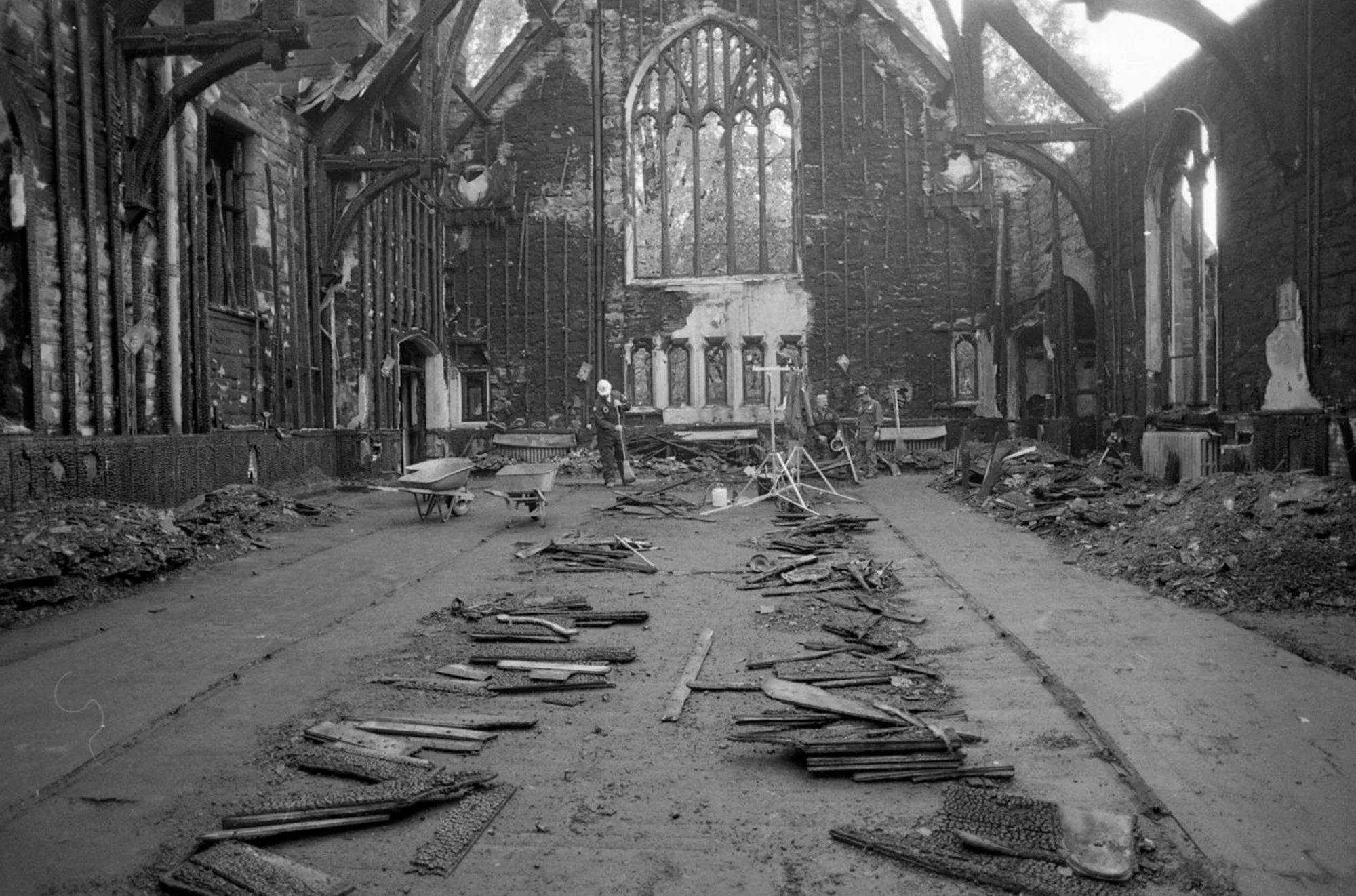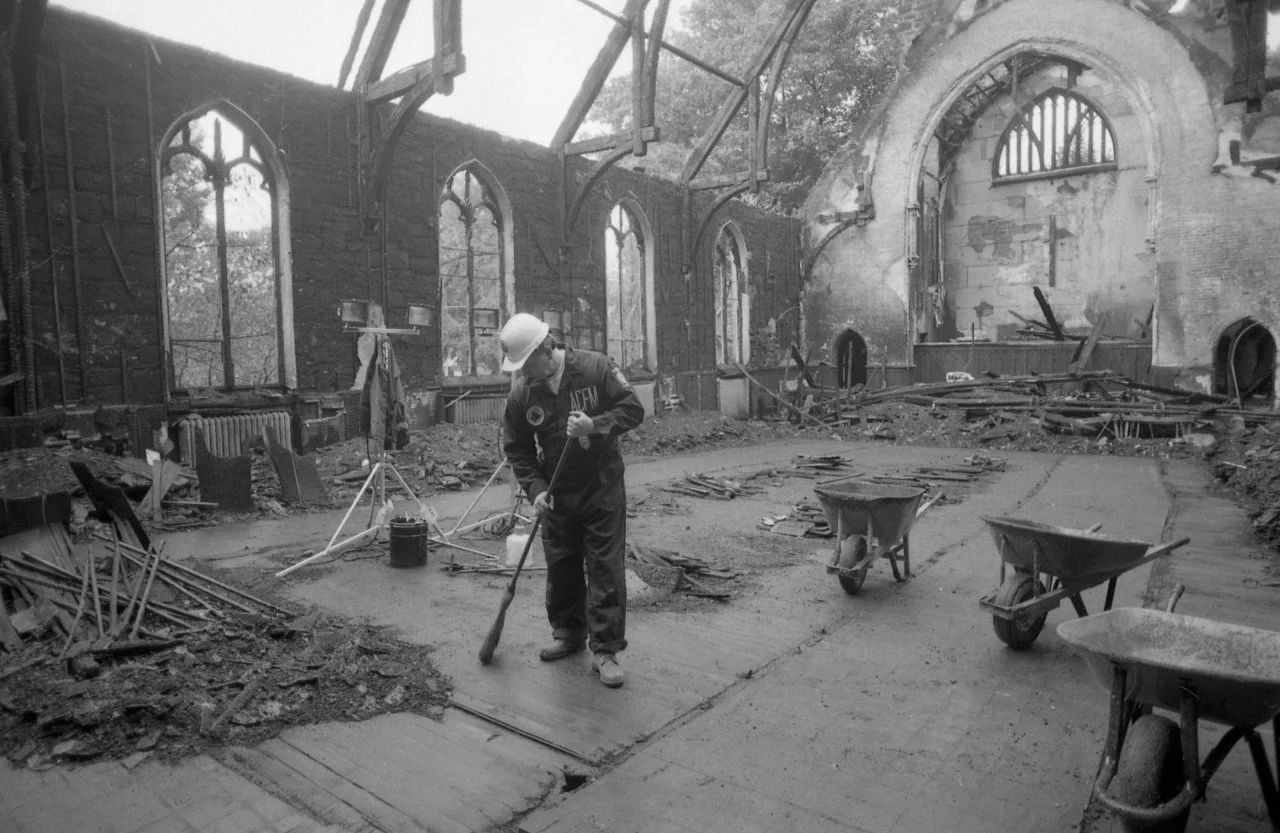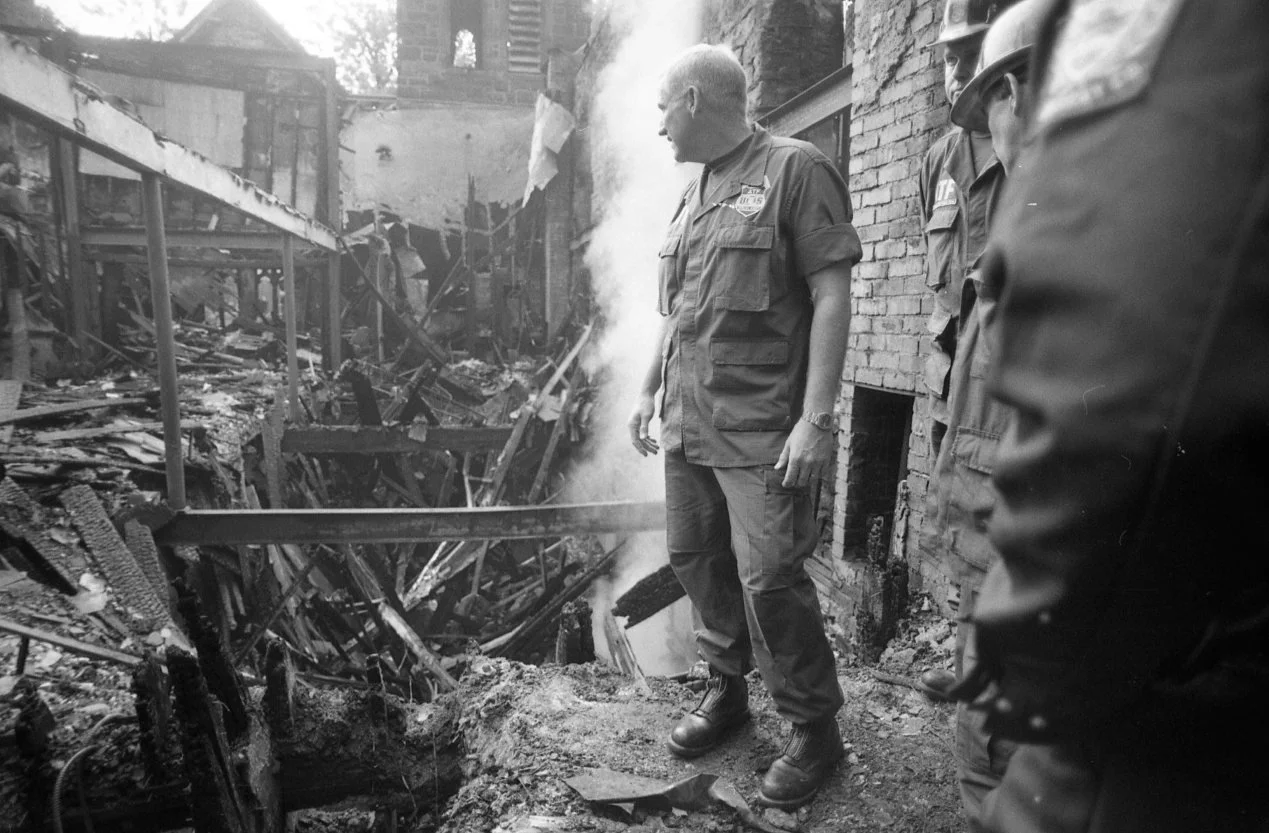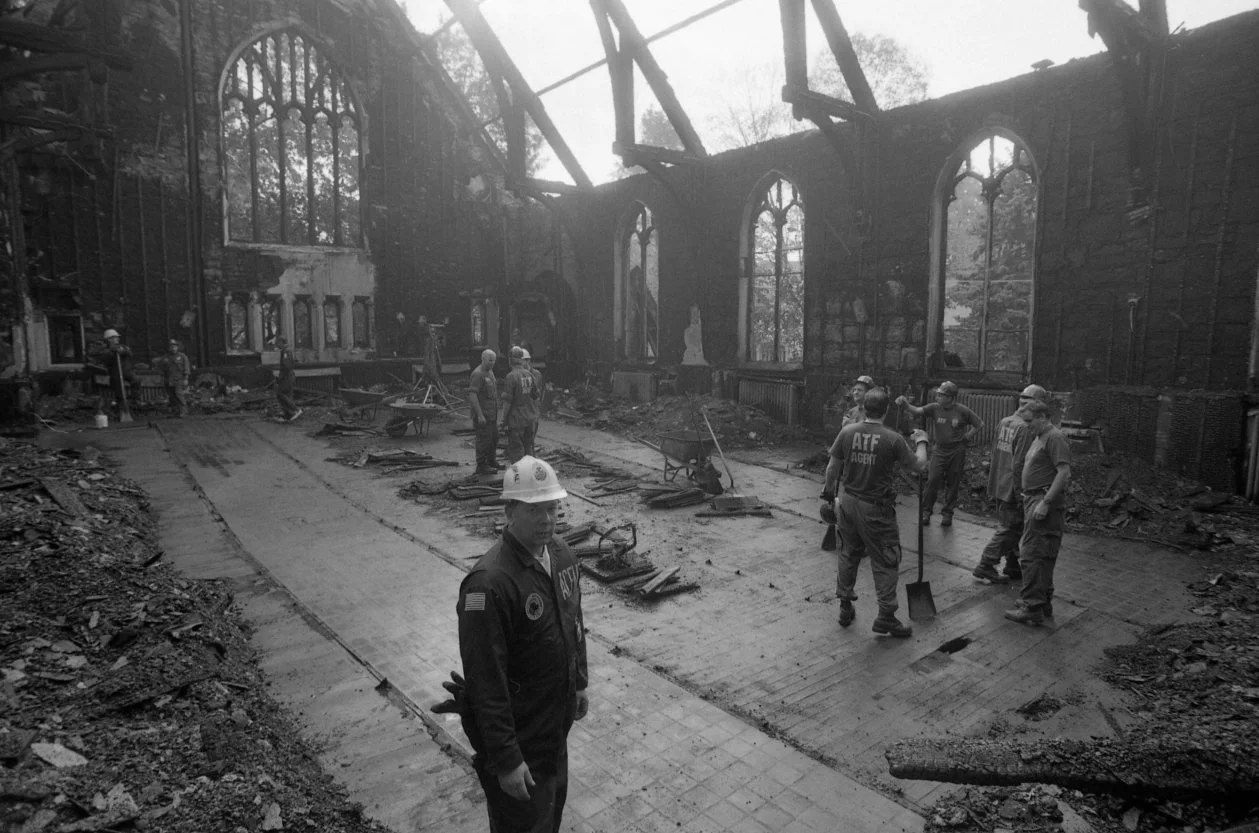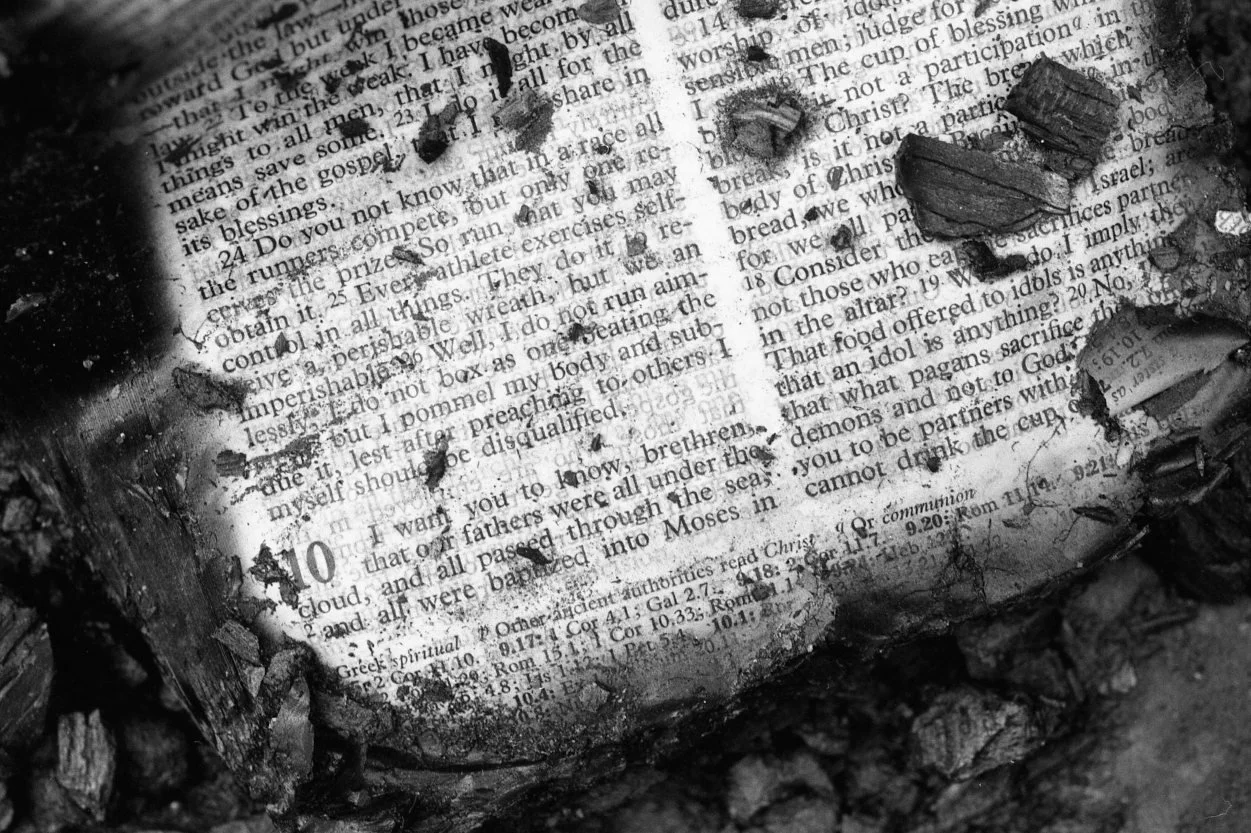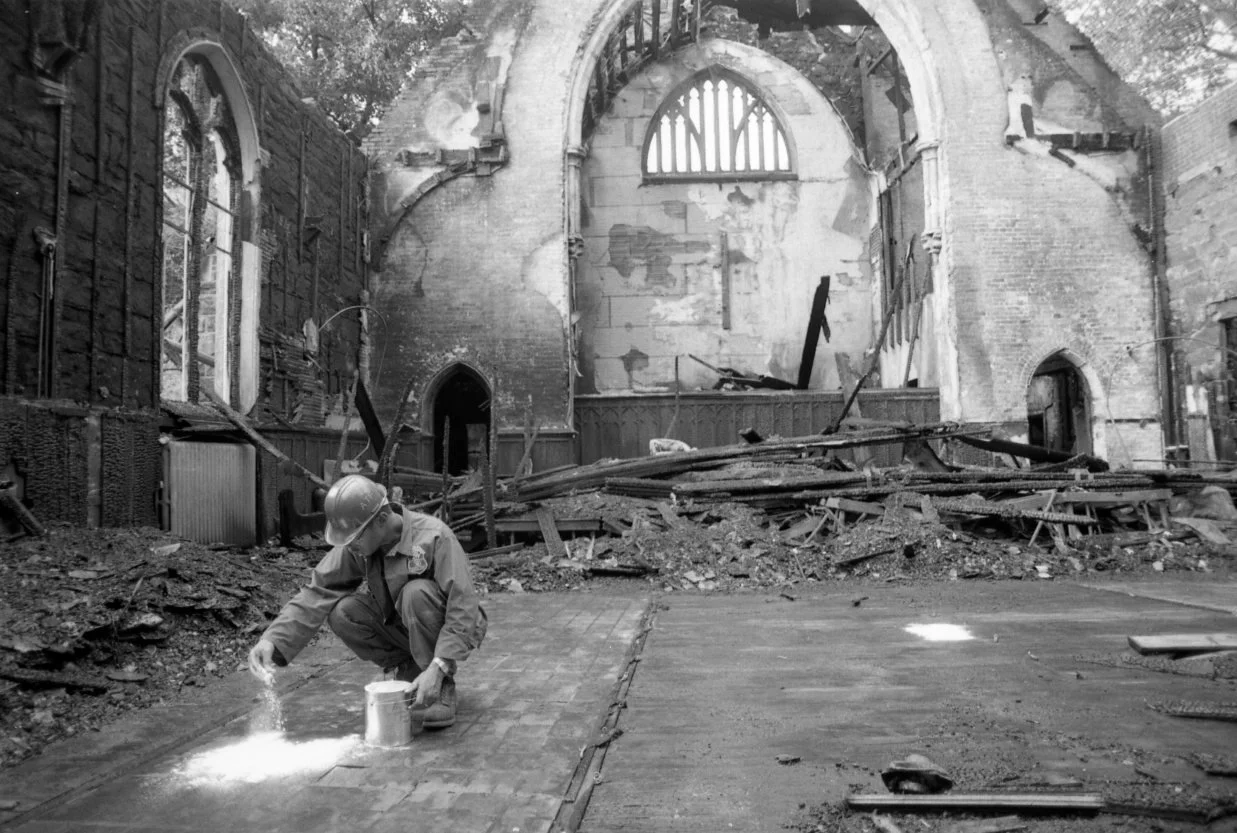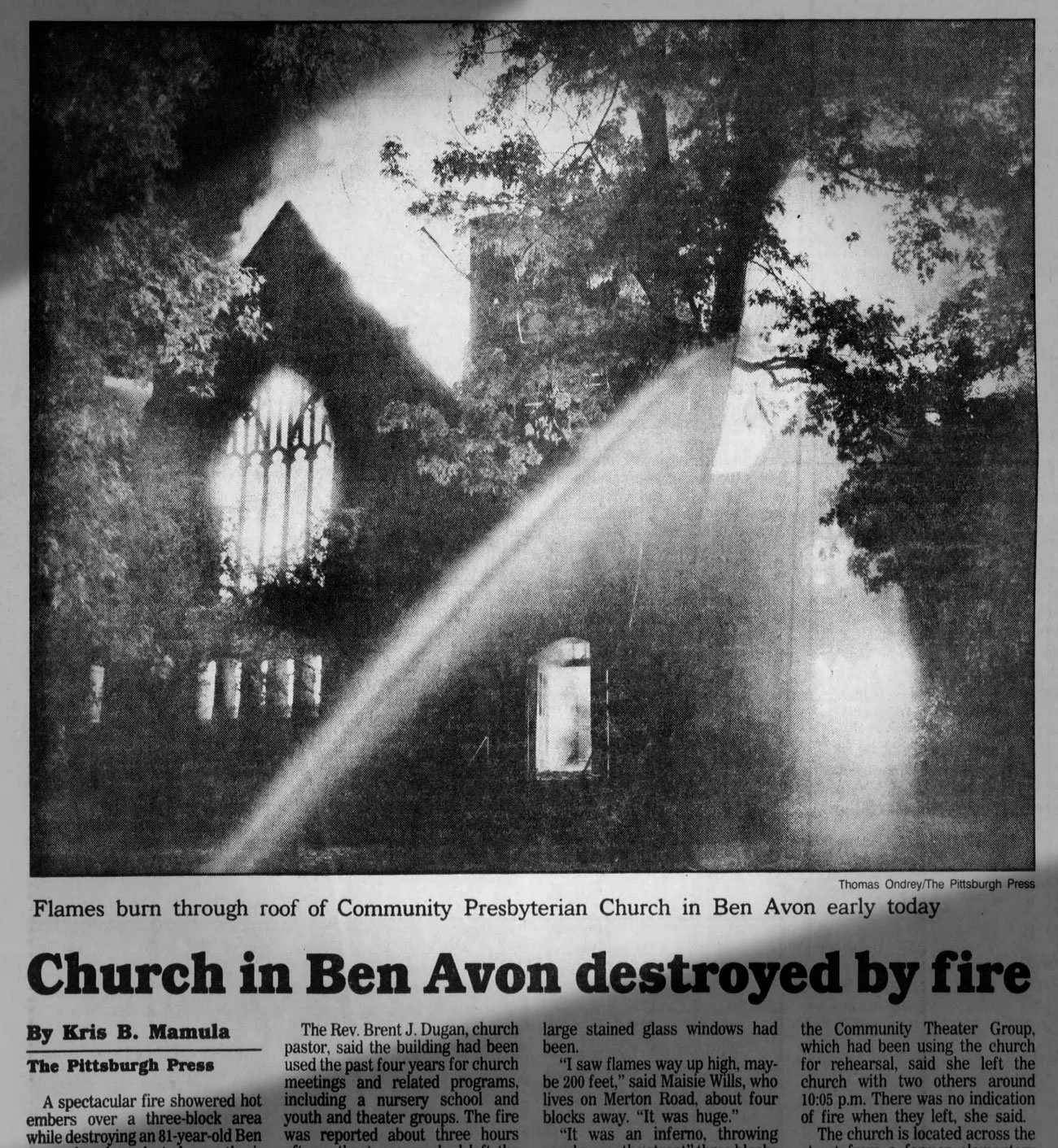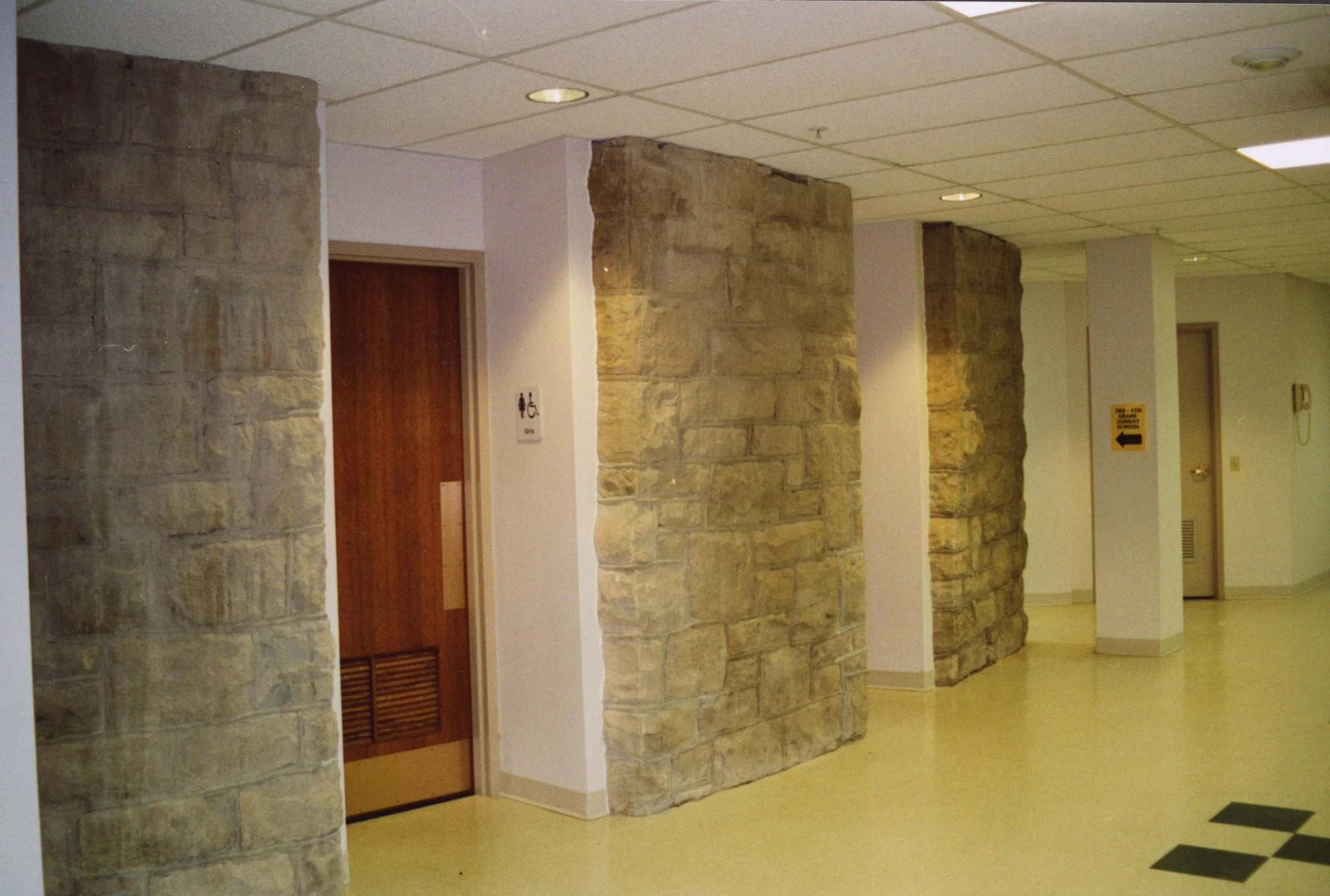History of Our Church
Ben Avon Presbyterian Church | Woodland United Presbyterian Church | Consolidation | Fire |
Reconstruction | New Beginnings | Dreams and Transformation | COVID-19 | Timeline
Ben Avon Presbyterian Church, 1935
Community Presbyterian Church of Ben Avon has a long and venerable history in the area, dating back to the mid-nineteenth century. The consolidation in 1987 of the Ben Avon Presbyterian Church and the Woodland United Presbyterian Church formed the current Community Presbyterian Church of Ben Avon. For over 150 years, our predecessors, who were members of the two congregations, served the residents of our community and the world at large. The two churches were integral to the community, and each made significant contributions to mission and service as separate entities, and the consolidation has made them even stronger. Here is a brief history of each church and a look back at the evolution of our congregation.
Ben Avon Presbyterian Church
For many years, residents of what we now know as Ben Avon, had no church to call their own. Many traveled, often by horseback or on foot, to Hiland Presbyterian Church on Perrysville Avenue. Some were able to ford the Ohio River to attend the Neville Island church, for in those days, there were no dams to maintain deep water. By 1860, residents grew tired of the trek and a group gathered in the home of Col. William Courtney to establish a church of their own. Ben Avon Presbyterian Church began as Emsworth Presbyterian in a one room stone schoolhouse, located where the Avonworth field is now on Ohio River Boulevard. By 1867, the congregation agreed to build a new church and a small frame building was constructed on land donated by Alexander Hilands, the site of our current church. The building was expanded in 1877 and 1885, but by the 1900s, with steady growth of membership, a bigger building was needed. The cornerstone was laid in July of 1911 when the frame building was razed. The Borough of Ben Avon was formed in 1892 so name of the church changed from Emsworth Presbyterian to Ben Avon Presbyterian on May 14, 1904.
Throughout the years, Ben Avon Presbyterian has been known for its contributions to missions and for serving as a meeting place for several community groups. In its over 125 years from 1860 until 1987, 15 ministers have served Ben Avon Presbyterian.
Click here for more details on the history of Ben Avon Presbyterian Church
Click here for the 125th Anniversary Memorial Booklet from 1987
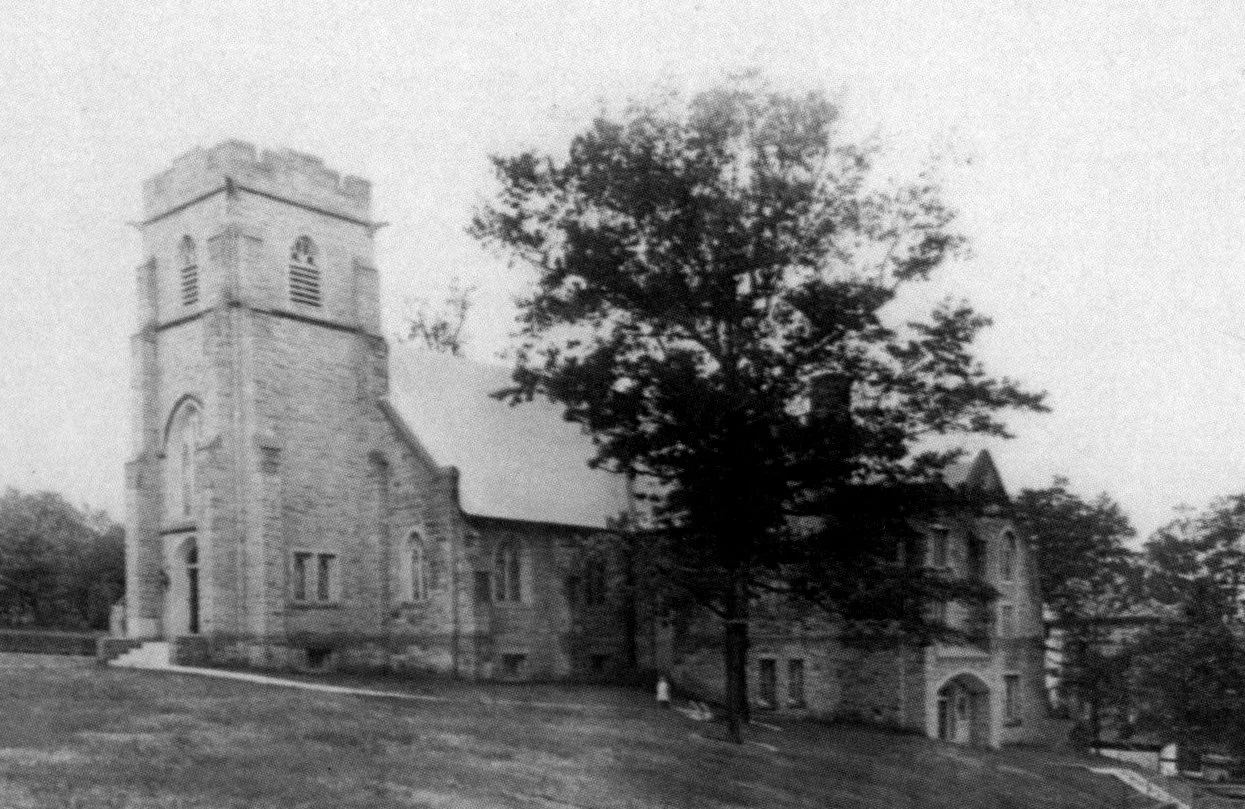









Woodland United Presbyterian Church
Woodland United Presbyterian Church was organized as the Ben Avon United Presbyterian Church Wednesday evening, April 26, 1911, in the home of Mr. and Mrs. Wallace Miller, 106 Dickson Avenue. There were 92 charter members. The newly organized congregation found a temporary home in a storeroom at 7115 Church Avenue. During the summer of 1911, the congregation purchased the site at the corner of Dickson and Woodland Avenues, where the church was built. The cornerstone was laid on November 18, 1911, and a small building was erected. The rapid growth of the congregation required an expansion of the church building with the addition of a new Sanctuary, offices, and school rooms in 1915, which stood until 1991.
Following the merger of the Presbyterian and United Presbyterian Churches USA in 1958, it was decided that the Ben Avon United Presbyterian Church should change its name, given that Ben Avon Presbyterian was now the same denomination and was the older congregation. The name was changed to Woodland United Presbyterian Church in 1963.
Over the years, the church underwent major renovations and additions to respond to community needs. And the church remained dedicated to mission and service. In its over 75 years, 6 ministers have served Woodland Presbyterian.
Click here for more details on the history of
Woodland United Presbyterian Church






Consolidation
The 1930s brought an attempt to unite the three churches in Ben Avon – the Methodist church and the two Presbyterian churches. At the request of the Methodist church, committees were appointed to investigate the possibility of such a merger. The proposal was defeated, and three unsuccessful attempts to consolidate the two Presbyterian churches were made before 1987. However, some lasting measure of collaboration between the churches was accomplished. Beginning in 1932, the three churches partnered every summer to have worship for a month in each building, with each pastor preaching. That remained the arrangement until the closure of the Methodist church in 1988.
One of the main obstacles to consolidating the two Presbyterian churches was the inability to agree on which pastor and which building would be chosen. In 1987, the pastor of Woodland accepted a call at another church and the pastor of Ben Avon agreed to find another position. This opened the way for resumed talks that were ultimately successful. The other stumbling block – which building would be used – was resolved by designating the Ben Avon building as the Worship Center and the Woodland building as the Program Center. Regular Sunday services, Church School, special services, after-service coffee hours and choir rehearsals would be held at the Worship Center. The Program Center for the new church would house Pastoral and Administrative offices, congregational dinners, Session meetings, Women’s Association meetings, youth group, Wooden Ladder Preschool, community service activities and most other meetings and activities. The Sanctuary of the Program Center would be used for services four times a year and would be available for weddings and funerals. The consolidated congregation would search for and call a new pastor to the church. The Community Presbyterian Church was officially formed on April 12, 1987
Fire
Early on the morning of October 22, 1991, fire destroyed the much-loved and stately stone church that was Woodland United Presbyterian Church. The building was hopelessly engulfed by a blaze that showered a three-block area with red-hot embers. The church had been a busy place, home to church offices, archives, Wooden Ladder Preschool, and several community programs including rehearsals for the latest production of Community Theater Players.
Within days, a team of investigators from the Bureau of Alcohol, Tobacco and Firearms (ATF) began sifting through the debris. Intense heat had charred the wooden floors in the Sanctuary and the slate roof collapsed as far down as the lower level in some places. Pews were disintegrated, leaving rows of ashes and scorched planks. Damage was estimated at more than $4 million. The ATF determined that an arsonist was responsible for the inferno since accelerant was detected, but to this day the question of who started the fire remains unanswered and no arrests were ever made. Elements of the church can still be found – Woodland’s bell, cornerstone and four stone windows were incorporated into a future addition to the Worship Center. Workers helped recover a Bible and hymnal. On November 3, 1991, members of the church as well as people from the community gathered for a candlelight service of remembrance.
An interesting aspect of the tragedy is that the movie Lorenzo’s Oil was being filmed in Ben Avon at the time, with the church building being used by the Hollywood crew for storage. You can see Woodland Church in its final days in several scenes in the movie.
Nearly two years after the arson fire destroyed the building, the charred walls were torn down. The demolition took about one month, first removing debris and then pulling down the stone walls. The lot was cleared and stayed empty while the long-range planning committee studied the situation and made recommendations to the congregation.
Pittsburgh Post-Gazette: Fire sparks memories, anger
Pittsburgh Post-Gazette: Era ending with demolition of church ruin
Click on a photo to expand.
The Construction Project
In 1992, an agreement was reached between the church’s Insurance Task Force and the insurance company concerning the fire loss. That agreement was finalized August 19, 1992 and approved by Session. In addition to the money allocated for renovations, a tithe (10%) of the insurance monies received was to be directed to several local non-profit organizations.
A building committee was elected in June 1993, and in November they received approval to retain an architectural firm to design a master plan and prepare construction drawings for the project. After reviewing the church activities and programs that had been increasing over the years, it became clear that simply renovating the existing building would not fulfill the ongoing needs of the congregation and an addition would be necessary.
Much time and effort were spent in trying to meet the needs of the congregation, balanced with the fiduciary responsibility to manage the insurance money wisely. Another major focus was on the esthetics of the design and materials of the new structure so that it blended with and complemented the existing structure. Cleaning eight decades of coal smoke from the exterior walls was a major improvement and allowed a view of how the building looked when it was first built.
The new 10,00 square foot addition housed Fellowship Hall, a new kitchen, and two large classrooms as well as bathroom facilities for Wooden Ladder Preschool. The Sanctuary was revamped, the choir area was moved from a loft to floor level for improved acoustics, and a new wooden floor was installed. The entire area behind the sanctuary was renovated to include the new Narthex (gathering) area, church office, pastor’s office & restrooms on first floor and offices, library, Chapel & conference room on second floor. Significant renovations were made to lower floor including new choir rehearsal room, new classrooms for Sunday School, Nursery room, restrooms & storage areas. An elevator and air conditioning were installed. The organ was dismantled, refurbished, and replaced behind a beautiful wooden screen in the same theme as the stained-glass windows.
The addition was scheduled to be completed by March 1996, and renovation of the existing building by August 1996. During the Sanctuary renovation, which began June 9, 1996, worship services were held in Fellowship Hall.
Another project was a much-needed parking lot. An offer was accepted to purchase the back section of the nearby Franciscan Father’s Friary for that purpose.
The Narthex holds some treasures from the Woodland Church, most notably the church’s cornerstone. Also within the Narthex is a wall containing four niches. The stone trim that frames these wood panels is from four windows that faced Dickson Avenue, placed exactly as they had been in the Woodland church. Near those four niches is a large stone engraved with the letters CPCBA 1996 to commemorate the unification of the two churches and the year the construction was completed.
Recovering from the fire, working with the insurance company, as well as planning and managing the construction project was an enormous effort. Multiple committees consisting of many, many dedicated members worked tirelessly to achieve the outstanding results we have today. We all owe a debt of gratitude to these Committees (Long Range Planning, Insurance, Site, Building, and Dream Team) who solicited input from the congregation, worked with external vendors and companies, managed the funds and processes scrupulously, and regularly reported progress. The result is a beautiful, comfortable, and welcoming place to worship, enjoy fellowship, and serve our community.
Click on a photo to expand.
New Beginnings
After the completion of the construction project, there was no stopping Community Church! We’ve been planning and implementing many projects that are focused on growing internally and externally. Here are some of the exciting things the last few years have brought:
Pastor Dugan and Donna, 1994
In 2014, Pastor Donna Giver-Johnston launched an initiative called “New Beginnings” to engage the entire church in deep discussion about the current state of our congregation, the church’s future and its calling. The following year, a group called K.N.I.T. (Kalled to Notice and Imagine our ministry Together) used the findings of the New Beginnings Assessment to develop a new mission to bring Christ to the community and extend an invitation to the wider world to be part of our Church.
Our powerful Mission statement provides the guiding beacon for all we do:
Our Calling:
Bringing Christ to our community; Bringing our community to Christ
Our Invitation:
Come, just as you are.
Jesus seeks to be in relationship with everyone.
So do we. Really—everyone.
Find the joy and inspiration you seek.
Jesus knows we all need more peace and joy.
We work hard to make it happen here.
Become the person you were created to be.
Jesus calls us to walk with him.
That means: growing in faith, going in love.
Dreams and Transformation
During 2015 and 2016, the CPCBA Session reflected on the insights that were generated during the church’s New Beginnings meetings and the KNIT team recommendations. Through a number of special discussions and exercises, the members of Session and our pastor formulated two new themes to move the New Beginnings concepts into action: Strategic Goals for the church that articulate what we would like to accomplish, and a model of inclusion called the Jethro Tree that outlines how we approach meeting our goals. Our strategic Goals are:
Become a financially self-sustaining, missional church –attention to reducing costs, capitalizing on volunteer labor where possible, and supporting many efforts to make CPCBA a welcoming church to new members
Develop effective two-way communications –support communications team efforts in creating a new logo and brand, purchasing equipment, and share information about our vibrant church community
Concentrate our community engagement –encourage efforts from many groups including Mission & Outreach, Fellowship, and Deacons
Sharing the strategic goals, 2016.
We have made progress on achieving the first two goals through expanded and deepened relationships with the primary organizations that our church supports through Outreach; increased participation in and activities engaging with the community; overhaul of the cpcba.org website and increased activity on the church Facebook page; better use of technology, including recording and posting of sermons; and the creation of a new logo, to name a few. The focus for 2017 was on our third strategic objective of becoming a missional, financially self-sustaining church, certainly the most challenging of the objectives.
The Dream & Scheme (“D&S”) Team was commissioned in September 2018 to pray, study, and share ideas to recommend specific steps in achieving Session’s goal of becoming financially self-sustaining. After six months of meeting, listening, praying, pondering, analyzing, reading, and discussing, the D&S Team presented three priorities which were approved by Session in 2019:
Inside Out – Transform the front of the church to outwardly reflect the active, vibrant, and inviting church we are on the inside, so that our church property looks inviting, saying, “Come, just as you are.”
Beyond Sunday – Develop curriculum that help us grow in faith and find God in the world around us through a variety of ways, so that our programs will help all “to find the joy and inspiration they seek.”
Mission Central – Provide housing in our church for out-of-town mission groups doing God’s work in the Pittsburgh community, to help “bring Christ to our community and our community to Christ,” and to ensure that all can “become the people they were created to be.”
A fourth initiative was added, Building for our Future, to provide for the investments needed to maintain our beautiful church including modernizing and making our facilities accessible. To fund these new initiatives and advance our goal of becoming financially self-sustaining, the Transformation Campaign was launched in 2019 to raise $350,000 over the next three years. While the pandemic has certainly had an impact on our timing, several of the initiatives including major technology enhancements which have been prioritized in response to the pandemic, have already been completed.
In response to the death of George Floyd and the protests for racial justice, in 2020 Session answered the call to action by committing to becoming an antiracist church, partnering with a predominately black church, and engaging the community in antiracist work. These are not goals to be finished and done; rather they are ongoing. We continue our work inside our church educating ourselves and, in the community, advocating and working for racial justice, as we seek to become the beloved community that Jesus calls us to be.
COVID-19
2020 also brought the global Covid-19 pandemic and Community Church responded by commissioning a Task Force with these goals:
Ensure that the safety and health of the congregation is paramount in planning to reopen
Expand and improve use of technology to communicate our mission of bringing Christ to the community and bringing the community to Christ
Be viewed as a valued community asset
In the months since the Task Force convened in May of 2020, the team has met weekly, reviewed all relevant research and public health guidance, created protocols and procedures to ensure the safest possible environment for the congregation and staff, the Wooden Ladder Preschool and the community.

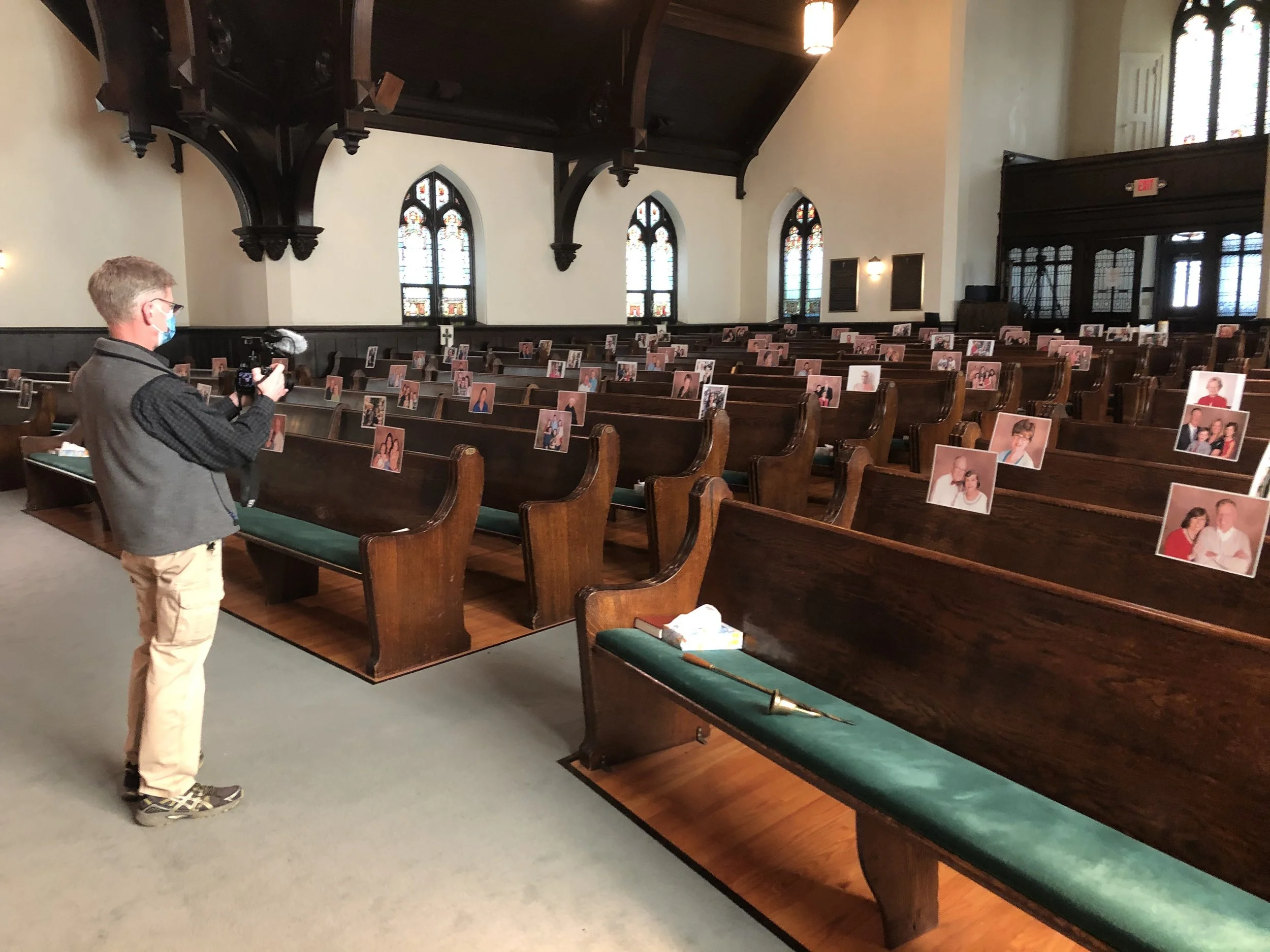




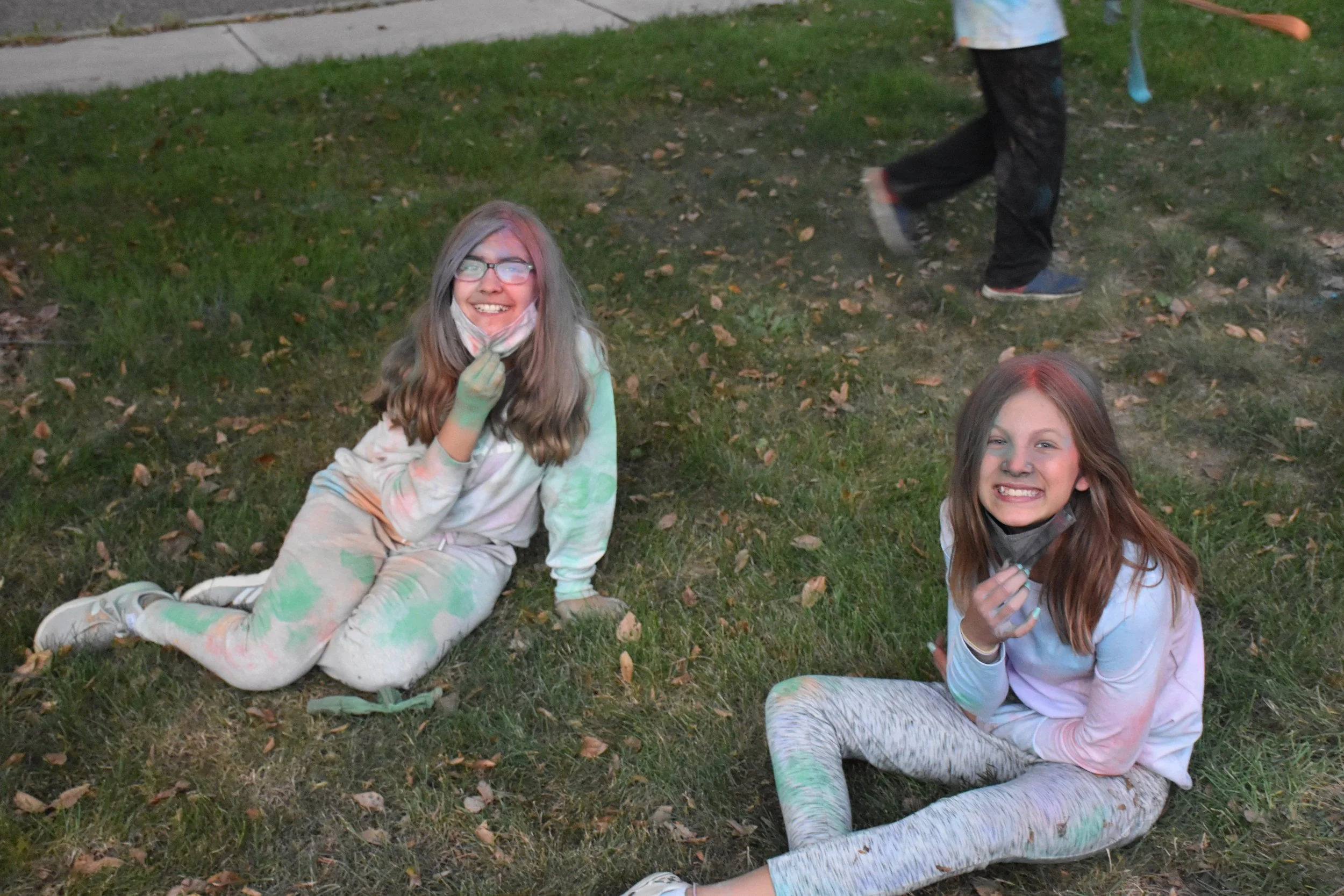












Timeline
Community Presbyterian Church of Ben Avon has its origin in Ben Avon Presbyterian Church (formerly Emsworth Presbyterian Church) and Woodland United Presbyterian Church (formerly Ben Avon United Presbyterian Church).
1860 Emsworth Presbyterian Church formed; services held in a one room schoolhouse
1867 Congregation agrees to build a church; land is donated on current property
1868 Church dedicated
1877 Church building is enlarged and in 1885 space is added for a chapel
1887 Session approves use of unfermented wine at church services
1891 House presented to church at corner of Dalzell & Brighton to be used as the manse and was for the next 37 years
1904 Name changed to Ben Avon Presbyterian Church
1911 New church building erected; cornerstone is laid in July
1911 Ben Avon United Presbyterian Church formed: temporary home at 7115 Church
1911 Site purchased at corner of Dickson & Woodland Avenues and church is built
1911 Cornerstone laid on November 18
1915 A new sanctuary is constructed, and the former building becomes the chapel
1930s Beginning of attempts to unite the Methodist church and two Presbyterian churches in Ben Avon
1963 Ben Avon United Presbyterian Church renamed to Woodland United Presbyterian Church
1987 Both churches merge to form Community Presbyterian Church of Ben Avon
1991 October 22 fire destroys the former Woodland United Presbyterian Church
1992 Insurance claim settled
1993 Building committee elected
1996 New construction completed
2006 Death of Pastor Brent Dugan
2014 Rev. Dr. Donna Giver-Johnston called to CPCBA (see some of her sermons)
2014 New Beginnings to engage the whole church in planning
2015 K.N.I.T. (Kalled to Notice and Imagine our ministry Together) used the findings of the New Beginnings assessment to develop a new mission
2015 Strategic Goals
2016 The Jethro Tree
2017 New Church Logo
2018 The Dream and Scheme Team
2019 Transformation Campaign: Inside Out, Beyond Sunday, Mission Central, Building for our Future
2020 Racial Justice Group
2020 Covid-19 Task Force
2023 Rev. Dr. Donna Giver-Johnston steps down from CPCBA to take up Directorship of the Doctor of Ministry Program at Pittsburgh Theological Seminary
